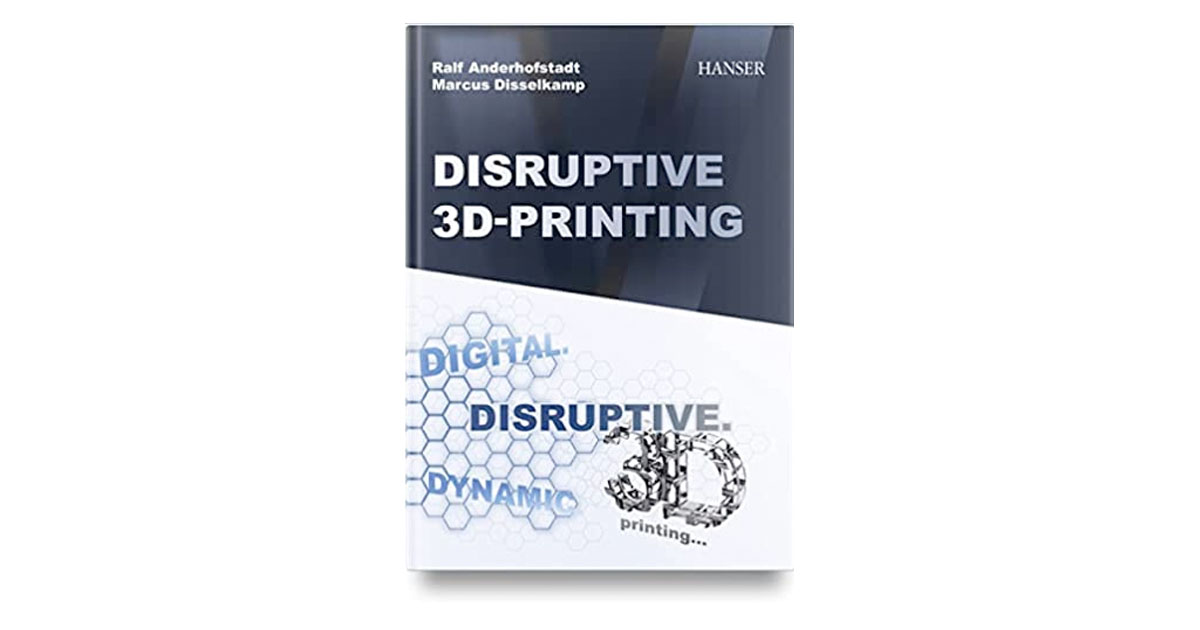Ralf Anderhofstadt and Marcus Disselkamp’s recent publication illuminates the technical intricacies of additive manufacturing and various materials, in addition to exploring disruptive business models that impact the entire value chain. As such, their work addresses a highly relevant and contemporary subject matter.
The challenging conditions in global supply chains are exerting significant pressure on the economy, hindering customary production and delivery processes. This is strikingly exemplified by affairs such as in the port of Shanghai off the coast of China, where hundreds of fully laden container ships lie anchored, unable to deliver their cargo due to China’s strict zero-covid policy and resultant lockdown measures. These difficulties are further compounded by political tensions, leading to a surge in the prices of commodities. Consequently, the current global economy is caught between escalating costs and the destabilization of established supply and production chains. To shed light on these pressing issues, we engage with one of the authors of a new book on the subject, Ralf Anderhofstadt.
Mr. Anderhofstadt, your recently published book was composed during a period marked by a multitude of crises. I would like to inquire whether you believe that additive manufacturing could potentially play a role in mitigating some of these crises, such as climate change?
Indeed, additive manufacturing or 3D printing has significant potential for reducing greenhouse gas emissions. Researchers at TU Delft have estimated that by 2050, additive manufacturing could potentially reduce global energy consumption by as much as 25%. This is largely due to the fact that 3D printing can have a positive impact on the three primary factors affecting a product’s carbon footprint: materials, manufacturing, and transport. Consequently, it is worthwhile to explore the impact of 3D printing on global energy consumption in greater detail and examine manufacturing processes more closely. Additionally, bringing production closer to its intended destination not only reduces CO2 consumption but also lowers logistics costs. Furthermore, demand-driven re-shoring can lead to job creation.
Re-shoring is also often discussed in connection with problems in the traditional value chain. Can additive manufacturing also contribute here?
Absolutely! Industrial enterprises are already pursuing strategies to reduce the complexities of their supply chains, which can minimize market uncertainties and volatility and streamline their production environments. Additive manufacturing presents several approaches to simplifying supply chains, such as decentralized manufacturing and production-on-demand. Digital warehousing also plays a crucial role in reducing the necessity to transport physical goods. 3D printing disrupts numerous existing business models as companies assume responsibilities previously delegated to their suppliers, intermediaries experience a loss of livelihood, and manufacturers relocate their production to decentralized sites. Nevertheless, this transformation also creates abundant opportunities for innovative business models that can enhance their resilience to crises.
Disruptive 3D Printing
This book unites the two sides of additive manufacturing: 1) the technical aspect of 3D printing of very different materials and 2) the disruptive consequences for value chains between producers, intermediaries, and customers due to modern business models. This is because 3D printing breaks with many existing business models: companies take over functions from their previous suppliers (following the “do-it-yourself” trend), intermediaries lose their livelihood (so-called “disintermediation”), manufacturers move their production to decentralized locations (e.g., retailers, car dealerships, or hospitals, so-called “decentralized production”), and (end) customers become much more intensive “prosumers” than marketing (as creator of this term) could ever imagine. The business models of many existing companies from very different industries are becoming toxic, i.e., threatening their very existence, as in logistics and warehousing, industry, services, retail, or customer service. Conversely, there are also many opportunities for modern, existence-securing business models, which the book discusses in more detail. In this way, this book not only shows to a broad range of readers the dangers of disruptive 3D printing technology, but also offers solution approaches and procedural models for identifying new economic livelihoods and competitive advantages. Thanks to the collaboration of the two authors, a profound knowledge of already existing references and management models can be drawn upon.
Following the publication of the German version in August 2022, the English version includes further international AM experts with their perspectives in the English book. In addition, other exciting new topics have been added in the English version, such as linking 3D printing to the metaverse or even completely new, promising 3D printing production processes. Link to the book!
Subscribe to our Newsletter
3DPresso is a weekly newsletter that links to the most exciting global stories from the 3D printing and additive manufacturing industry.





















